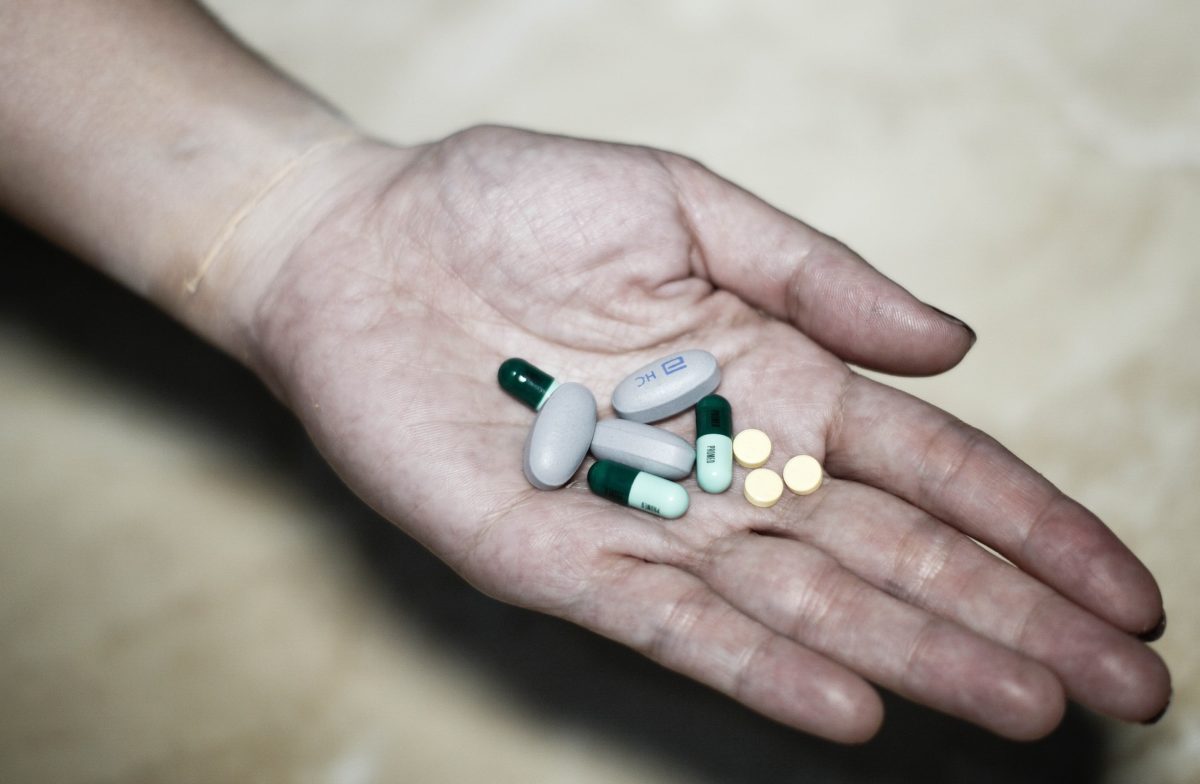
03 Apr How Painkiller Restrictions Have Led to Heroin Addiction
Table of Content
According to the National Survey on Drug Use and Health (NSUDH) in conjunction with information gathered from the National Vital Statistics System, it has been discovered that the instance of heroin addiction in the United States has effectively doubled over the course of the last decade. As heroin use has become increasingly widespread, so too has the occurrence of heroin-related death, particularly due to overdose. Between the years of 2002-2013, the rate of heroin overdose increased 286%, accounting for 8,200 deaths in 2013 alone. Yes, you read that correctly: death due to heroin overdose nearly quadrupled over the course of a single decade.
Understandably, the meteoric rise in heroin usage and related deaths has elicited a dramatic spike in national attention and forced politicians, medical providers, and regulatory agencies to reexamine the issue. Around 2013, new policies regarding access and availability of prescription opioids were enacted in an attempt to stem what was perceived to be a precipitating factor to heroin abuse; the abuse of widely available, addictive prescription opiates. However, rates of heroin abuse and related deaths have continued to rise concurrently with increased restrictions on prescription opiates, which have given rise to questions as to whether such restrictions may actually be exacerbating the opioid crisis rather than solving it.
Background
People have been abusing opiates for hundreds of years and have been aware of associated health risks for equally as long. In short, it is no secret that opium and its derivatives are detrimental to our health. Unfortunately, despite this knowledge, people continue to abuse prescription opiates and illicit versions such as heroin to this day.
Even when compared with other substances of drug abuse, opiates tend to be extremely addictive- producing strong physical and psychological dependence amongst users and causing them to use repeatedly despite detriments to their health, social life, family life, work life etc. Opiates, and heroin in particular, are known for their powerful euphoric, analgesic (pain-killing), and anxiolytic (anxiety-reducing) effects. In and of themselves, these effects are all rather positive. However, when overall quality of life is reduced by associated disease or death, we run into quite a problem.
Those who use heroin recreationally, known as “chasing a high”, are typically in pursuit of positive feelings of happiness or wellbeing, or relief from anxiety, boredom, or pain. These users have been strongly stigmatized for their behavior, which has been viewed as irresponsible, illegal, and generally distasteful by the government and public alike. Because of this, there has traditionally been little sympathy for users’ plight and policy has been mainly punitive.
However, there is a growing subset of heroin users who did not initially choose to use recreationally, but rather as a substitute for prescription opioids that are no longer available to them. In many cases, these people had no intention or desire to abuse illicit drugs initially, but through a series of unfortunate circumstances have fallen victim to heroin addiction. It is for this reason that many have begun to empathize with their situation and policy has begun to change dramatically.
The Dilemma
The root of the issue at hand is the fact that, although opiates have proven to be very addictive, they have also proven to be some of the most effective analgesics. Throughout American history, people have relied on opiates to treat serious and legitimate medical conditions.
- The U.S. Military employs opiates both on and off the battlefield. Soldiers who are wounded in battle are often treated with morphine, a close cousin of heroin, in order to relieve extreme pain while maintaining consciousness. This allows combat medics to treat wounds immediately and prepare the wounded for extraction from life-threatening situations. Opiates will often be used in preparation for subsequent surgeries by military surgeons, as well as by other military physicians to keep soldiers operable or pain-free after discharge- all worthy uses.
- Civilian Doctors will prescribe opiates in a similar manner to the general public. They are used to prepare patients for otherwise painful procedures, as well as during rehabilitation. They may also be used to treat chronic pain due to illness or injury- allowing patients to return to work or maintain a higher quality of life.
An unfortunate side effect of these legitimate forms of usage is the development of dependency amongst patients. Addiction risk is discussed between physicians and patients before opiates are prescribed, and it falls to the discretion of both parties to decide whether or not the risk outweighs the negative impact of pain on a patient’s wellbeing.
How Opiate Treatment Has Gone Wrong
While the legitimate uses of prescription opiates are well-documented and generally accepted by medical professionals and policy-makers, the addictive nature of such drugs requires them to be manufactured, prescribed, regulated, and consumed responsibly. Unfortunately, carelessness on the part of patients, physicians, and prescription manufacturers has led to some very real problems for patients and society at large.
The Role of Physicians
The fact is: humans are fallible, so no doctor is right one hundred percent of the time. The burden falls on physicians to prescribe medications in appropriate dosages and for an appropriate duration in order to treat the targeted condition and minimize the risk of harmful side effects. Regarding opiates, it is possible for physicians to misjudge either the necessary dosage or duration which can lead to the development of dependence in a patient. In some cases, dependence will develop even when the dosage is appropriate for the patient’s pain reduction needs. Opiates are not a perfect solution.
However, irresponsible prescribing practices have also led patients to inadvertently overuse prescriptions and develop dependence. There are three influences which may cause a physician to over-prescribe, and it is the responsibility of each physician to cope with them appropriately.
Patients
Sometimes, patients put pressure on doctors to prescribe too much medication. It is understandable that those in pain would wish for relief, and in some cases, they may ask their provider for more medication than is best. In other cases, those who have already developed an addiction to the medication will seek additional drugs to feed their dependence. This can be inadvertent, as those who do not recognize their own addiction as such may simply believe that more medication is necessary to treat their needs. Other times there is malicious intent when those who are knowingly addicted seek out prescriptions in order to feed their desire or, in some cases, resell them to fund further use by themselves and others.
Pharmaceutical Companies
Pharmaceuticals are big business, and prescription opiates are a huge money-maker. It is no secret that lobbyists for pharmaceutical companies campaign heavily to keep their opioid prescriptions available on the market. They have also put pressure on physicians to prescribe their brands in the form of monetary or experiential incentives. This is a large part of the reason for the tarnished reputation of the pharmaceutical industry which has pervaded public opinion for decades.
Insurance Companies
Insurance providers largely dictate the availability of different prescriptions through pricing of their plans. High-cost medications are generally covered only under high-cost plans. Conversely, only low-cost medications are typically covered under lower-cost plans, like those provided under the Affordable Care Act. However, the cost of a drug (and its inclusion in a given insurance plan) is in no way correlated with its effectiveness or propriety for treatment of a given condition. In the case of prescription pain medication, this has caused less expensive drugs to be overprescribed due to financial constraints. Some of these drugs are highly addictive in comparison to their expensive counterparts, so patients are forced to take on higher risk of addiction or bear pay the retail price of less risky drugs- which is often prohibitive.
Over-prescription of Opiates
All of the influences listed above have caused prescription opiates to become overprescribed and widely abused over the last fifteen years. Increased access to these drugs has resulted in increased rates of dependence and has been considered an epidemic as the death toll has risen, especially amongst young males. Media attention and public outcry have led to recent changes in policy regarding the manner in which prescription opiates are marketed and distributed. Regulatory agencies, policymakers, and medical professionals have all agreed to restrict access to prescription opiates while insurance companies continue to cover only those that are the least costly. However, with so many already suffering from addiction, the institution of these new restrictions has correlated with an increase in abuse of illicit opiates such as heroin.
Heroin as an Alternative
According to reports, heroin abuse has continued to rise since restrictive policies on prescription have become less available. It has been argued that this correlation may in fact imply causation. All of a sudden, patients who were previously able to access prescription opiates, as well as those who abused them illegally, are now unable to acquire them. Instead of prescription drugs, many seem to have turned to unregulated drugs like heroin to compensate for this shortage and continue to feed their addictions.
A Dangerous Heroin Epidemic
Heroin and other drug abuse is currently responsible for thousands of deaths per year, and the numbers seem to be remaining steady. While safer prescription opiates have become more expensive and increasingly difficult to come by, heroin remains cheap, accessible, and extremely dangerous. Heroin, as with all illicit drugs, is not subject to regulations on dosage, potency, composition, or duration of use. Every batch will differ in potency, which can lead to overdose when people consume that which is stronger than they may be used to. Additionally, while pharmaceuticals are typically mixed with inane substances with little-to-no side effects, heroin is often cut with other substances that may be very harmful in and of themselves. This makes heroin very unpredictable and results in high rates of overdose and death.
Death rates due to heroin drug overdose have also begun to follow formerly unseen trends-affecting new populations of Americans more than ever before. In past decades, deaths due to overdose were largely confined to metropolitan areas, particularly those of lower socioeconomic status. The current epidemic has become much more widespread, much to the dismay of law enforcement and public health officials. The following groups have become increasingly affected in recent years:
- Those living in urban or suburban areas
- Those who earn between $25,000 and $60,000
- Males between the ages of 18-44
- Non-Hispanic Whites
Those of lower socioeconomic status and those of non-white origin remain similarly affected, resulting in the largest heroin epidemic the U.S. has experienced in a generation.
Other Risks of Heroin Abuse
The risks of heroin abuse are not limited to death by overdose. Often, heroin is consumed by injection with a hypodermic needle. Since hypodermic needles are difficult to procure, they are often shared amongst multiple users without sterilization resulting in the spread of diseases such as:
- HIV
- Hepatitis C
- Hepatitis B, as well as
- bacterial infections of the skin, bloodstream, and heart
These too have the potential to be life-threatening and are capable of being spread not only through continued heroin abuse but also through physical or sexual contact. This poses an additional concern for public health officials and medical treatment providers, as they must face the issue on multiple fronts.
What Can Be Done?
Federal and state government agencies have begun to expand the resources they provide to healthcare providers in an attempt to combat this epidemic. This includes:
- Providing educational training so they can provide informed decisions and ensure the appropriate prescribing of opioid painkillers, which includes:
- Implementing uniform prescribing guidelines for chronic pain
- Developing prescription drug monitoring programs as a routine part of clinical practice
- Increasing access to substance abuse treatment services through the Affordable Care Act
- Streamlining distribution of the lifesaving drug naloxone, which is used to reverse prescription opiate and heroin overdose which may otherwise result in death
- Supporting the research, development of pain medications that are less prone to substance abuse
- Improving surveillance to help identify communities at risk and implement prevention strategies
It is imperative that healthcare and insurance providers comply closely with these strategies in order to make them effective. The burden will also fall to those who need help, along with those in their communities, to utilize all educational, medical, and rehabilitative resources available to them if this epidemic is to be stemmed. Heroin abuse has become increasingly widespread, but it can be combatted through a combination of responsible prescribing practices, increased access to appropriate treatment and willingness to seek help.
If you or a loved one needs heroin detox, please call our Georgia Drug Detox center today. We can also help you learn how to tell if your child is abusing heroin as well. Whether it’s a friend or family member, never wait to help your loved one seek treatment before it’s too late.
Sources:
“How Can Prescription Drugs Lead to Heroin Use?” Partnership for Drug-Free Kids. 15 Mar. 2019. https://drugfree.org/article/rx-to-heroin/
“Prescription Opioids and Heroin.” NIDA. 15 Mar. 2019. https://www.drugabuse.gov/publications/research-reports/relationship-between-prescription-drug-heroin-abuse/prescription-opioid-use-risk-factor-heroin-use
“Opioid Abuse and Addiction.” Medline Plus. 15 Mar. 2019. https://medlineplus.gov/opioidabuseandaddiction.html






No Comments